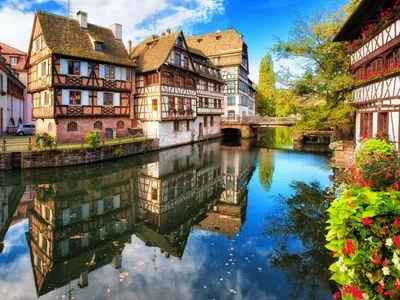

Set off for the pier in downtown Strasbourg where you will board a panoramic boat which will take you to the famous district of the Petite France. Its canals, charming houses with colored, half-timbered walls and narrow alleyways will enchant you. You will glide past the Tanners Quarter, the Covered Bridges (Ponts Couverts) and the Panoramic Terrace on the Vauban Dam. Our cruise will continue through the German Quarter. Following the French defeat in 1870, Germany planned to make Strasbourg the capital of the Reichsland or Imperial Territory of Alsace-Lorraine. This district, referred to as the "new town", represented a new form of urban planning, featuring wide roads, monumental administrative and cultural buildings, and luxurious private homes. Landscaping also played a key role in this impressive urban planning scheme. Then you will get the chance to see the European Parliament Building, completed in 1999, which was designed to host monthly sessions of the European Parliament. The architecture of the building is based on a combination of circles and ellipses, with the building laid out and organized into several clearly identified areas. Finally you'll discover the Human Rights Building where the European Court of Human Rights is located. Return on board.
PLEASE NOTE

Set off for the pier in downtown Strasbourg where you will board a panoramic boat which will take you to the famous district of the Petite France. Its canals, charming houses with colored, half-timbered walls and narrow alleyways will enchant you. You will glide past the Tanners Quarter, the Covered Bridges (Ponts Couverts) and the Panoramic Terrace on the Vauban Dam. Our cruise will continue through the German Quarter. Following the French defeat in 1870, Germany planned to make Strasbourg the capital of the Reichsland or Imperial Territory of Alsace-Lorraine. This district, referred to as the "new town", represented a new form of urban planning, featuring wide roads, monumental administrative and cultural buildings, and luxurious private homes. Landscaping also played a key role in this impressive urban planning scheme. Then you will get the chance to see the European Parliament Building, completed in 1999, which was designed to host monthly sessions of the European Parliament. The architecture of the building is based on a combination of circles and ellipses, with the building laid out and organized into several clearly identified areas. Finally you'll discover the Human Rights Building where the European Court of Human Rights is located. Return on board.
PLEASE NOTE